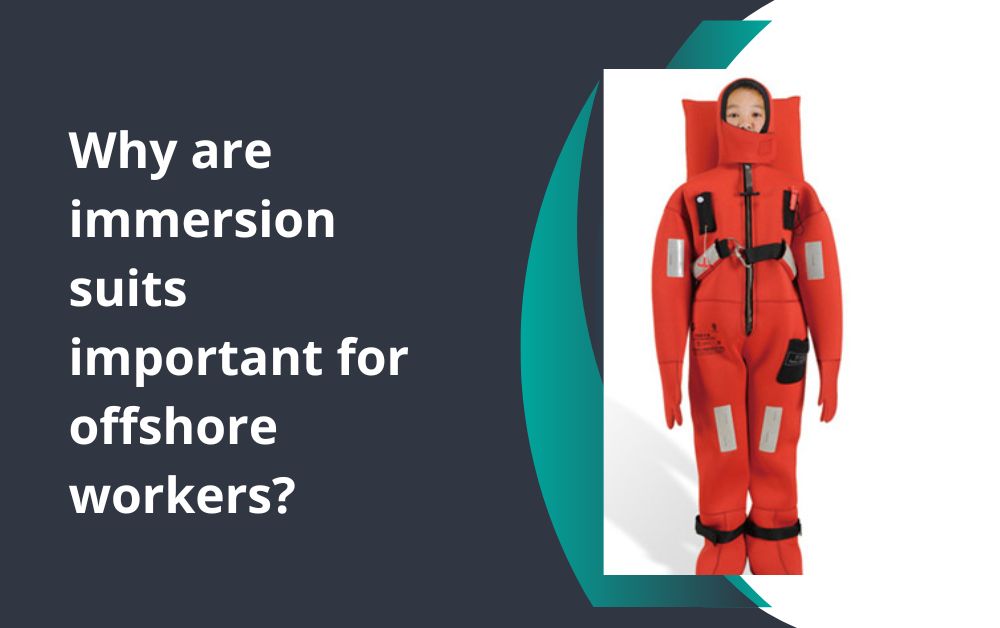Immersion suits, also known as survival suits or exposure suits, are essential safety gear designed to protect offshore workers in the event of emergencies at sea. These specially crafted suits play a crucial role in ensuring the survival and well-being of individuals working in challenging maritime environments. This article explores the significance of Immersion Suits and their importance in safeguarding offshore workers.
Protection Against Cold Water Immersion
One of the primary functions of immersion suit is to protect offshore workers from the dangers of cold water immersion, which can lead to hypothermia and potentially fatal consequences.
Insulating Material
Immersion suit are constructed from insulating materials that provide thermal protection against cold water temperatures. These materials retain body heat, helping to prevent rapid heat loss and hypothermia.
Example: Neoprene Material
Neoprene, a common material used in immersion suit, offers excellent insulation properties. It keeps the wearer warm even in cold ocean waters, enhancing survival chances until rescue arrives.
Buoyancy and Floatation
Immersion suit are designed to provide buoyancy and floatation, enabling offshore workers to stay afloat and conserve energy while awaiting rescue.
Inflatable Chambers
Many immersion suit feature inflatable chambers or buoyancy aids that increase the wearer’s buoyancy in water. This reduces the risk of sinking and allows the wearer to maintain a stable position in the water.
Example: Buoyancy Aids
Integrated buoyancy aids in immersion suit are strategically positioned to support the wearer’s body in water, ensuring they remain above the surface and visible for rescuers.
Enhanced Visibility and Safety
Visibility is crucial during maritime emergencies. Immersion suits often come in bright colors and feature reflective strips to improve visibility in low-light conditions.
High-Visibility Colors
Immersion suits are typically designed in bright colors such as orange or yellow, which are highly visible against the backdrop of the sea. This facilitates easier spotting by search and rescue teams.
Example: Reflective Strips
Reflective strips on immersion suits reflect light, making wearers more visible during nighttime or adverse weather conditions. This enhances safety by increasing the chances of timely rescue.
Ease of Donning and Securing
During emergencies, quick and efficient donning of immersion suits is critical. These suits are designed for easy wearing and securing, even in stressful situations.
Zipper and Closure Systems
Immersion suits feature robust zipper and closure systems that allow for swift and secure fastening. This ensures a snug fit around the wearer’s body, preventing water ingress and maintaining insulation.
Example: Adjustable Straps
Adjustable straps on immersion suits enable customization to fit different body sizes comfortably. This feature enhances comfort and ensures the suit remains securely in place during water immersion.
Compliance with Safety Regulations

Immersion suits are mandated by maritime safety regulations and international standards to ensure the protection of offshore workers. Compliance with these regulations is crucial for maintaining a safe working environment at sea.
SOLAS Standards
The Safety of Life at Sea (SOLAS) convention sets out requirements for immersion suits’ design, construction, and performance standards. These regulations ensure that immersion suits meet stringent safety criteria.
Example: Inspection and Certification
Immersion suits undergo regular inspections and certifications to verify their compliance with SOLAS standards. This rigorous process ensures that suits are fit for purpose and capable of protecting offshore workers effectively.
Conclusion
In conclusion, immersion suit are indispensable safety equipment for offshore workers, providing protection against cold water immersion, enhancing buoyancy and floatation, improving visibility, ensuring ease of donning, and complying with safety regulations. These features collectively contribute to safeguarding the lives and well-being of individuals working in offshore environments. By equipping offshore workers with reliable immersion suit, employers demonstrate a commitment to safety and preparedness, mitigating risks and ensuring prompt rescue in emergencies.
Note:- To read more articles visit on netblogz.
